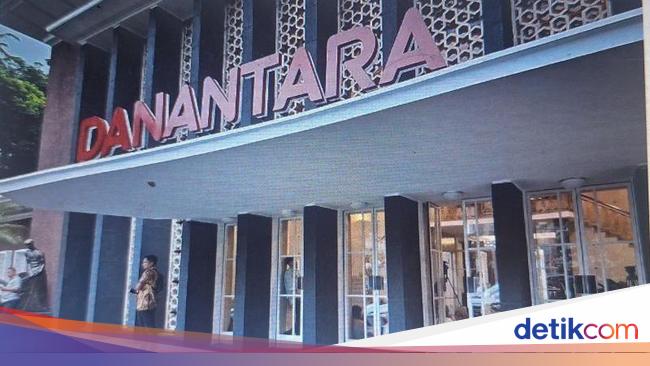Indonesian State-Owned Enterprises to Consolidate Under Investment Management Agency
Table of Contents
- 1. Indonesian State-Owned Enterprises to Consolidate Under Investment Management Agency
- 2. Limited Liability Structure for Streamlined operations
- 3. Public Companies Face Change
- 4. Accelerating the Inbreng Process
- 5. Addressing Underperforming SOEs
- 6. Related Media
- 7. Key Takeaways: The BUMN Consolidation
- 8. Given the focus on SOE consolidation, restructuring, and comparisons to global trends, especially the US,
- 9. Interview: dr. Anya Sharma on Indonesia’s State-Owned Enterprise Consolidation
- 10. introduction
- 11. Key Drivers of Consolidation
- 12. Limited Liability and Public Companies
- 13. Timeline and Implementation challenges
- 14. Impact on Underperforming SOEs
- 15. The American Comparison
- 16. Conclusion and Future Outlook
jakarta,March 20,2025 — Indonesia’s Ministry of State-Owned Enterprises (BUMN) is moving forward with a plan to consolidate several state-owned companies (SOEs) under the umbrella of the Investment Management Agency (BPI) of Daya Anagata Nusantara (and Antara),marking a meaningful shift in the country’s approach to managing its vast portfolio of government-controlled businesses. The initiative, discussed at length during a closed-door meeting on Wednesday, March 19, 2025, with the House of Representatives Commission VI, aims to streamline operations, improve financial performance, and foster greater efficiency across various sectors.
Limited Liability Structure for Streamlined operations
A key aspect of this consolidation is the requirement that all SOEs entering the BPI and Antara framework must be structured as Limited Liability Companies (PT). This decision, according to Deputy Minister of BUMN Kartika Wirjoatmodjo, is designed to facilitate smoother integration and operational alignment.If this is a non-perum BUMN that we inbrengan,is related to operations. Outside the main Perum,
said Wirjoatmodjo, known colloquially as Tiko, following the meeting at the Indonesian Parliament Building in Central Jakarta.
The focus on Limited Liability Companies reflects a broader trend in corporate governance toward structures that offer greater flexibility and accountability.The “inbreng” process, referring to the transfer of shares from the Ministry of SOEs to BPI and Antara, is a critical mechanism for achieving this consolidation. This mirrors, on a smaller scale, some of the discussions around restructuring government assets in the United States, where privatization and public-private partnerships are often considered for improving infrastructure and service delivery.
Public Companies Face Change
The situation is more complex for SOEs structured as Public Companies (Perum). Tiko indicated that these entities are still under review, as their entry into the BPI and Antara framework necessitates a transformation into the PT format. Yes, transformation first, yes. This is again processed, the Perum we are still reviewing first,
he stated.
This transformation process raises several questions, particularly regarding the potential impact on the Perum’s existing obligations and stakeholders. A similar situation might arise in the U.S. if the Tennessee Valley Authority (TVA), a federally owned corporation providing electricity, were to undergo a significant restructuring. The complexities involved in altering the TVA’s mandate and operational structure would require careful consideration of its impact on energy markets and consumers in the Southeast.
Accelerating the Inbreng Process
Chief Operating Officer (COO) of antara, Dony Oskaria, emphasized the urgency of the Inbreng process, noting that his team is working to accelerate the transfer of BUMN shares. This acceleration is evidenced by the drafting of a Government Regulation (PP) to govern the Inbreng process. All inbreng at the same time, so we are making PP Inbreng. Earlier we were consulting with the DPR regarding the Inbreng PP. In accordance with the Law, it must be inbreng PP,
said Oskaria.
Oskaria is aiming for completion before the end of March 2025. Some RUPS will start later this month, so it’s optimistic that it must be better,
he projected. This ambitious timeline suggests a strong commitment from the Indonesian government to implement these changes swiftly. For U.S. readers, this aggressive timeline is comparable to the rapid deployment often seen in tech startups striving for market dominance.
Addressing Underperforming SOEs
A critical motivation behind this consolidation is the desire to rehabilitate struggling SOEs. Dony Oskaria confirmed that the SOEs being integrated into the BPI and Antara framework are, in many cases, those facing financial difficulties.We hope that at the end of March it will be entered. Yes, after the Inbreng process is completed, then it will soon enter the SOE into and between,
he stated.
He specifically mentioned BUMN Karya, companies involved in construction and infrastructure, as prime candidates for restructuring. Actually, not many people are losing money. Ah yes, that (BUMN Karya) will also be done by restructuring. Of course it will be easier with and between. If in the past the company was one by one, if now with the consolidation process, it would certainly be easier for us to do the process of improving the conditions of our companies that currently have not benefited,
Oskaria explained. This approach mirrors strategies used in the U.S.during economic downturns,where consolidating struggling businesses under stronger entities aims to prevent widespread bankruptcies and job losses.
The success of this consolidation strategy hinges on several factors, including effective leadership, clear governance, and a clear plan for turning around underperforming assets. It also requires careful consideration of potential counterarguments, such as the risk of creating overly bureaucratic structures or stifling innovation within the consolidated entities.
As of today, March 20, 2025, these plans are in their initial stages, and it remains to be seen how effectively the Indonesian government will navigate the complexities of consolidating its state-owned enterprises. The world is watching to see if this bold move will invigorate Indonesia’s economy and provide a template for other nations managing large portfolios of state assets.
Related Media
Watch live coverage of DetikPagi for further insights:
Key Takeaways: The BUMN Consolidation
| Aspect | Details | Implications for U.S. Readers |
|---|---|---|
| Consolidation Goal | Improve efficiency and financial performance of SOEs | Highlights the ongoing global debate on the role of government in business. |
| Structure | Emphasis on Limited Liability companies (PT) | Mirrors the importance of corporate structure in the U.S. business landscape. |
| Timeline | Completion targeted by the end of March 2025 | Demonstrates the accelerated pace of economic reforms in emerging markets. |
| Focus | Restructuring underperforming SOEs, particularly in construction | Reflects the universal challenge of managing struggling businesses and infrastructure projects. |
Given the focus on SOE consolidation, restructuring, and comparisons to global trends, especially the US,
Interview: dr. Anya Sharma on Indonesia’s State-Owned Enterprise Consolidation
introduction
Archyde News Editor: Welcome, Dr. Sharma, to Archyde News. We’re hear today to discuss the important consolidation of Indonesian State-Owned Enterprises, or SOEs.For our viewers, Dr. Anya Sharma is a leading economist specializing in emerging markets and corporate restructuring.
Dr. Sharma: Thank you for having me. I’m happy to be here.
Key Drivers of Consolidation
Archyde News Editor: Let’s dive right in. This consolidation aims to streamline operations and improve financial performance. Can you elaborate on the primary drivers behind this initiative, particularly given the involvement of the Investment Management Agency?
Dr. Sharma: Certainly. The indonesian government, through its Ministry of SOEs, is seeking to create greater efficiencies. By bringing these enterprises under the Investment Management Agency, they hope to improve financial outcomes, allowing for a more centralized management approach to improve results. This strategic move is not uncommon globally, and it aims to ensure a more robust and competitive economic environment for key sectors like infrastructure and energy.
Limited Liability and Public Companies
archyde News Editor: The article mentions a shift towards Limited Liability Company (PT) structures. What’s the meaning of this, and how is it affecting Public companies (Perum) within this consolidation?
Dr. Sharma: The move to PT structures is crucial for easier integration and aligns with modern corporate governance principles. Public Companies, however, present a more complex challenge. They will require transformation due to differences in mandates. This transformation needs careful planning to avoid disruptions and to ensure legal considerations will need to be addressed.
Timeline and Implementation challenges
Archyde News Editor: The timeline is ambitious, with the government aiming for completion by the end of March 2025. What potential challenges do you foresee in achieving this, and how can they be mitigated?
Dr. sharma: The aggressive timeline presents the greatest challenge. The ‘inbreng’ process – the transfer of shares – needs to be managed swiftly and transparently. Potential hurdles include regulatory hurdles, the integration of differing corporate cultures, and potential resistance from stakeholders. Effective leadership, clear communication, and a phased implementation plan are crucial to navigate these challenges successfully. The government’s ability to streamline this process,as well as ensuring smooth implementation of changes to struggling SOEs,like BUMN Karya,will be key.
Impact on Underperforming SOEs
Archyde News Editor: Many of the SOEs undergoing consolidation are facing financial difficulties, particularly in sectors like construction. What specific benefits dose consolidation offer in turning around these underperforming assets,and what are the potential pitfalls?
Dr.Sharma: Consolidation allows for resource pooling, shared expertise, and improved economies of scale. By integrating these SOEs, it enables better strategic planning and potential restructuring. However, there’s a risk of creating bureaucratic structures or losing the unique strengths of individual companies. Proper governance, performance incentives, and a clear restructuring strategy are the keys to ensuring the turnaround efforts are effective and sustainable.
The American Comparison
Archyde News editor: The article draws a few parallels to the United States, specifically mentioning potential examples of companies like the Tennessee Valley Authority. How relevant are such comparisons for our U.S. readership, and what are the similarities and differences in approach?
Dr. Sharma: The comparison underscores the broader global challenges in managing state-owned assets, whether its companies being in the U.S. or other countries. in the U.S., there’s a similar ongoing discussion about the role of the government in business, and consolidation, privatization and public-private partnerships are also being considered.Similar structures are an important tool for driving economic progress and efficiency.
Conclusion and Future Outlook
Archyde News Editor: Dr. Sharma, final thoughts? How do you see this Indonesian SOE consolidation playing out in the coming months and years?
Dr. Sharma: It’s an ambitious undertaking, and the government is showing strong commitment. The success of this consolidation will depend on effective execution.It can invigorate Indonesia’s economy and set an example for other nations handling state assets. The key will be the government’s ability to quickly execute. Though, what are yoru thoughts, as someone following this, on how this bold move could reshape Indonesia’s economic landscape.
Archyde News Editor: Excellent points. Dr. sharma, thank you for your valuable insights.
Dr. Sharma: Thank you for having me.







